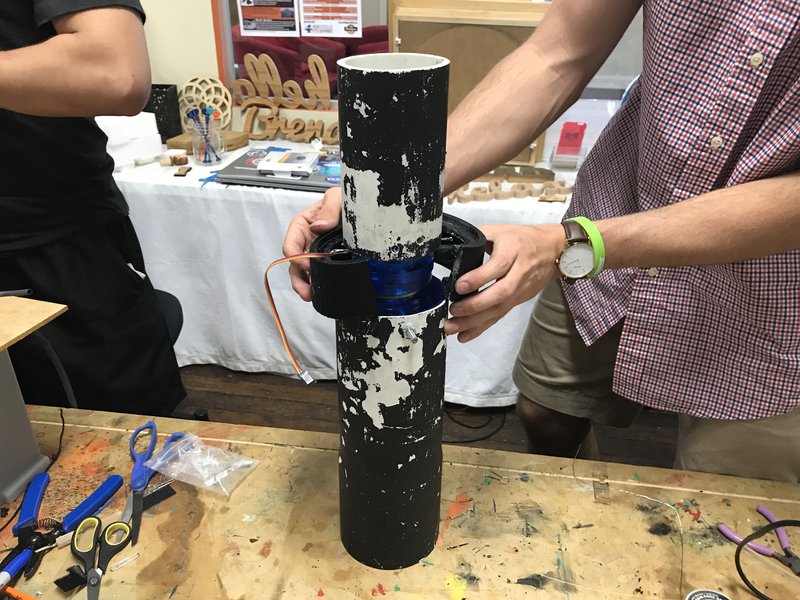Dream Team | Bring Your Own Solution
The Challenge | Bring Your Own Solution
Follow your brain and your heart, and present a solution ofyour own choosing!
Modular Missile Separation System
The Modular Missile Separation System is a non-pyrotechnic separation system for a two-stage missile or rocket. It uses a two step release process involving an unlocking phase followed by a release.

The Modular Missile Separation System is a safe, reusable, and modular separation system. It is designed to be reused in multiple rockets, and the large-scale concept would include a deployable parachute for stage one of the missile or rocket to ensure the computer and motors remain in working condition. Its reusability makes it cost effective. The motions required to separate the components can be divided into two main steps. The first step is an unlocking phase provided by a motor actuator pulling one component out of the groove of another. The second step is the actual push of the separation system sides. This takes place by the rotation of a servo motor with arms that push radially outward against the separation side pieces.
The team used 3D printed components for the separation sides and glued acrylic pieces in layers to create the couplings that connect to each stage of the missile or rocket. Servo motors were used to provide rotation. These materials were provided by the Huntsville Steamworks Lab at Lowe Mill in Huntsville, Alabama. The team used PVC piping to represent the rocket body.
The team learned many valuable lessons, particularly relating to the challenges presented by rapid prototyping. The materials available to the team were relatively weak. The Huntsville Steamworks Lab was printing hollow 3D parts in the interest of lower print times. Unfortunately for the team, despite multiple reprint attempts, the hollow body was simply not strong enough for the design. The arm designed for the locking mechanism repeatedly broke. Due to time constraints and the simultaneous design and build of the couplings, there was little the team could do to improve the strength of the 3D printed components. In a nutshell, the components used during this challenge for rapid prototyping are acceptable for demonstrating a concept, but there is a significant trade off in part strength and performance. The team wishes to have had the opportunity to machine the couplings and system sides out of metals.
SpaceApps is a NASA incubator innovation program.